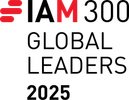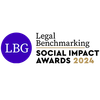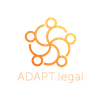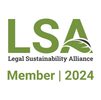Last month saw a significant step forward towards the introduction of a new framework and regulations for protecting registered designs in Europe as the Council of the European Union formally adopted new rules which are intended to bring design protection in Europe up to date with changes in technology since the original framework was introduced.
Background of EU Design Law
We have been able to protect registered designs in Europe since 2003. However, in that time, designs have changed significantly both in terms of the actual designs themselves, but also the products or media through which designs are created and used. Modernisation of the regulations to better protect designs in the digital space has been long overdue. The package of changes being introduced looks to do this, and also to make further changes to make designs in Europe even easier and more cost-effective for individuals and small businesses.
Highlights of the Changes to Registered Designs in Europe
- Design protection in Europe will be re-named from a 'Community Design’ to a ‘European Union Design’, bringing the terminology in line with European Union Trademarks. A new marking symbol of a ‘d’ in a circle will also be introduced.
- The filing fees for a design application will continue to offer very cost-effective protection in Europe for designs. Renewals fees are being revised to increase gradually through the 5 yearly periods of protection to ensure that designs still on the register after a maximum of 25 years will be those that are still considered worth protecting by the applicant. As designs provide a very cost-effective means for protecting products with a short shelf life, this will allow applicants to take a view as to whether renewal of a design is warranted at the end of the first 5-year period of protection.
- The definitions of a design and a product are being updated in order to implicitly recite technology such as 3D printed designs and digital designs. This is particularly relevant to animated designs, for example, which have traditionally been protected by showing a series of still images representing the transition from one state of the design to another. Other designs, such as visual effects used in films, light shows, or dynamic advertising hoarding, will also be covered by the new definitions.
- Provisions will be made for submitting video files, which will make the protection of an animated design much clearer.
- The maximum number of protected views of a design is being increased beyond the current 7, which will again enable applicants to include more views of a design without having to split views between different designs. Whilst many designs include a relatively standard set of drawings including top and bottom views, left and right-side views, front and back views and a perspective view, this would allow perspective views both from above and below to be included together with the other views or cross-sectional views from different positions of the product rather than having to select only one such view. This should help to protect more complex designs more easily by keeping all relevant views of the design together.
- The scope of infringing acts will also be updated to include specific acts such as creating, downloading, copying, showing or distributing any medium or software that records a design.
- Another major change will be the removal of the requirement that all designs in a multiple design application must fall within the same Locarno classification. This unity of class requirement means that some applicants had to file different applications to protect various designs or risk the examiner issuing an examination report objecting that some designs fell in a different class. This will provide even more opportunities for applicants to take advantage of the cost savings available for filing multiple design applications but will also reduce costs in relation to prosecution by removing one of the main objections raised by examiners and will also ensure an even higher proportion of applications pass from filing to registration within a few days or weeks.
- A much-discussed topic of the changes will be clarification of an EU-wide repair clause that will remove design protection from spare parts that are used to restore the appearance of a complex product. This will cover replacement car body parts, for example such as a door or body panel that have to have a particular shape or appearance in order to restore the appearance of the car. However, other components where there is design freedom, such as a steering wheel or roof rack or tow bar, will continue to be protected.
- The intention is to give consumers more choice of suppliers and to increase competition for such component parts. Individual states of the EU will be given a period of time, currently expected to be 8 years, to amend national laws to remove protection of such parts to ensure harmony with the new EU laws.
Next Steps
The new framework will be published shortly, and this will determine the date on which different parts of the directive and regulations will come into effect. We expect implementation to occur gradually from early in 2025 and will provide more information as soon as the publication date is available.
Protecting Your Registered Designs in Europe
Designs in the EU provide a very quick and cost-effective way of obtaining enforceable protection across the whole EU, which can be used to remove competitors' products from sale while your own product is still on the shelf, even for those products with a very short shelf life. So, registered designs are commercially important not only for multi-national companies but also for SMEs and individuals alike.
The EU design group at Murgitroyd has a wealth of experience in assisting clients not only to file their registered design applications and to obtain registered rights, but also to strategically tailor their designs to ensure that they are obtaining the strongest possible protection for this increasingly valuable part of their IP portfolio.



















